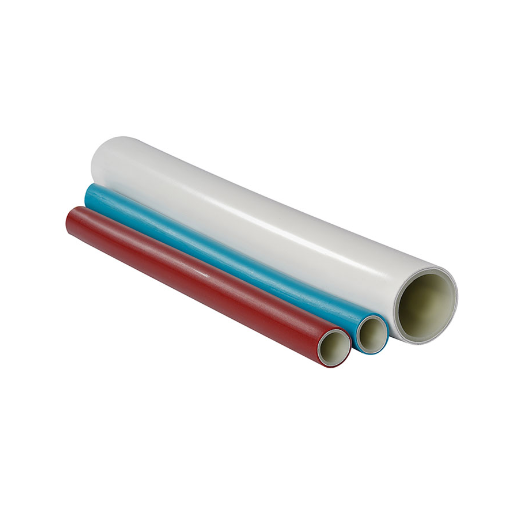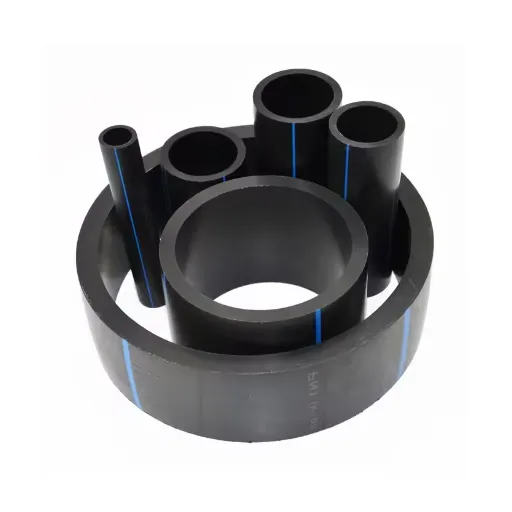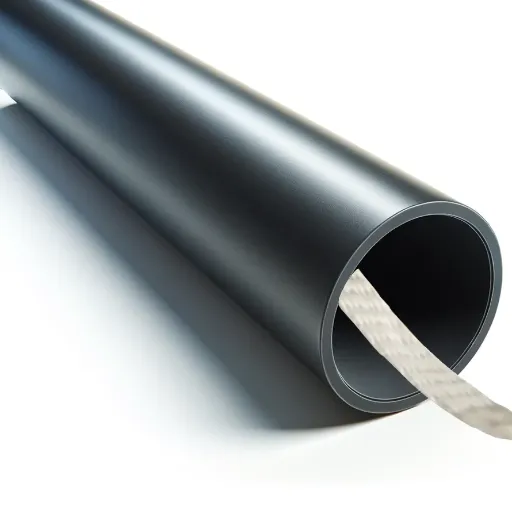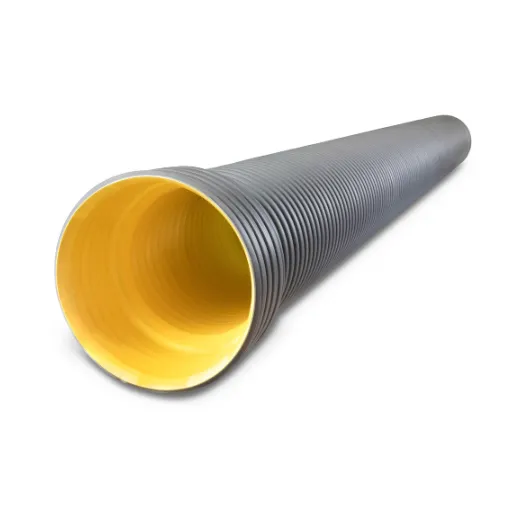Durability, flexibility, and performance are essential factors when selecting piping materials for modern plumbing and heating systems. Among the most popular options are PE-RT and PEX pipes, both of which offer exceptional reliability and efficiency. However, understanding the nuanced differences between these materials is crucial for making informed decisions in residential and commercial projects. This comprehensive guide dives deep into the benefits, specific applications, and key characteristics of PE-RT pipes while comparing them directly to PEX. Whether you are a contractor, engineer, or curious homeowner, this article will equip you with the knowledge needed to determine the best solution for your unique needs.
Introduction to PE-RT Pipe
What is PE-RT?
Polyethylene of Raised Temperature Resistance, or Polyethylene for short, is a material brand used for one type of application under high temperatures. Enhanced thermal and mechanical properties are brought about by using controlled comonomer distribution during polymerization, imparting flexibility and durability required for plumbing, heating, and equally arduous applications.
The principal advantage of PE-RT pipes lies in their property of becoming operable for extended periods under elevated temperatures without sustaining any deformation or loss in structural integrity. Although they could suffer the same illnesses of cracking, corrosion, and scale buildup affecting alternative materials, they do not. And high impact resistance at lower temperatures makes PE-RT pipes suitable for installation under different weather conditions and installation scenarios.
Unlike PEX, PE-RT does not require any cross-linking during the manufacturing process, making for a somewhat simpler production process. This gives the added advantages of simplifying quality control and producing a recyclable product. Its easy installability and compatibility with standard fitting methods have made it a choice in residential as well as commercial piping systems.
Key Properties of PE-RT
PE-RT (Polyethylene of Raised Temperature Resistance) has several important properties that make it a better choice for piping systems. First, it has excellent thermal stability and can perform properly in both high and low extreme-temperature applications. Thermal expansion and contraction cause stress to materials and deformation over time, and this some swelling will eventually lose their capacity to withstand the harsh environment.
Another vital property for piping is flexibility. It can bend without any rupture, thus making pipe installation simple, especially in difficult or confined spaces. The flexibility also decreases the number of required fittings and joints, so the costs of materials and coil installation will go down. Because it is lightweight, it also makes it easier to handle and transport on-site.
PE-RT also offers excellent cracking and stress resistance and can, therefore, be reliably used for long-term applications. Because of its resistance to very high internal pressure, there is practically no possibility of system failure under tough operating conditions. Further, PE-RT is not crosslinked and, hence, is recyclable, providing an environmentally friendly alternative for piping projects and high performance for residential, commercial, and industrial applications.
Benefits of Using PE-RT Pipes
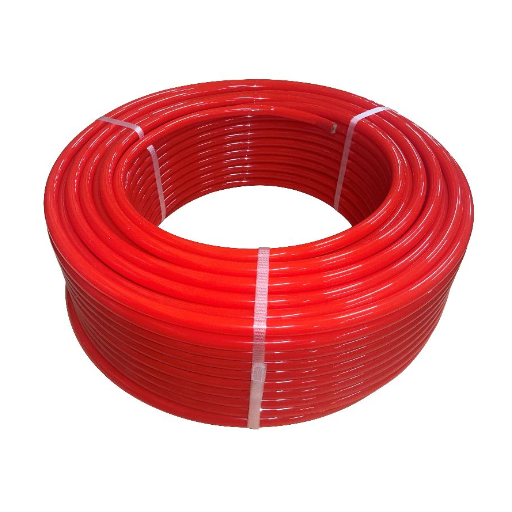
Durability and Longevity
Engines for DO piping are stiffed with utmost durability and longevity. These pipes are designed under high-temperature and high-pressure conditions such that geo-structural integrity is not compromised. PE-RT is a unique polymer with a molecular design that guarantees very high resistance to creep under thermal and mechanical load cycles, thereby minimizing the degradation of the material over time. These pipes are briskly used where performance over a period under severe conditions is required-like radiant heating or industrial fluid transport systems.
An increased longevity of the material is provided by superior crack resistance. The PE-RT has high SGC resistance to prevent failures due to environmental stress cracking or long-term external stress. Potential service life implications of this feature have been confirmed only by strict tests, such as the notch pipe test and hydrostatic pressure performance tests, which attest to the serviceability of the pipes after several decades of use. The pipes are also flexible, which lessens stress at the joints and enhances adaptability during installation in complicated piping applications.
In the longevity of PE-RT pipes, another chief factor is their resistance against chemical and corrosion-based degradations. Metallic pipes, under certain water chemistries or soil conditions, may corrode or scale, but PE-RT is free of those vulnerabilities. This chemical inertness ensures smooth internal flow is maintained over time, minimizing possible maintenance and replacement costs. With this and their superior thermal stability, these features put PE-RT in the category of best-grade materials used for heavy-duty piping solutions for a broad variety of residential, commercial, and industrial construction ventures.
Flexibility and Ease of Installation
PE-RT piping demonstrates flexibility, which highly simplifies its installation compared to more rigid materials such as metal and PVC. Since it is capable of bending in almost any layout, fewer fittings and connectors are necessary. This flexibility shortens the installation binding time, allowing the operation to end with minimal weak points in the piping system and thus ensuring reliability and durability in service.
Being lightweight certainly works with this bettering aspect toward ease in installation, whether for small residential project applications or gigantic industrial applications. Labor costs are reduced as installers would have to exert less effort in placing PE-RT pipes, allowing for more streamlined workflows in the construction site; hence, PE-RT can be mechanically or thermally joined, so installation techniques can be applied with great flexibility according to project needs.
In my opinion, PE-RT for piping systems is an option that is quite logical, owing to a mixture of flexibility, efficiency, and reliability. These very properties ease logistics and installation, all the while maintaining what should be expected from quality long-term solution piping in this day and age. Configurations are therefore easy to design and install: from simple house systems to commercial infrastructure, making it a favoured material in the field.
Cost-Effectiveness and Energy Efficiency
Lower material costs, easy installation methods, and reduced maintenance costs make PE-RT piping a more suitable option for cost-effectiveness in various applications. PE-RT remains comparably cheaper when compared with conventional piping material such as copper, while earning performance ratings that arguably exceed those of copper. The flexibility of PE-RT often avoids the use of special fittings or tools, saving labor time and money.
Thermal conductivity of PE-RT offers particular advantages from energy efficiency perspectives in heating and cooling applications to facilitate optimum energy transfer with the least loss. The poor absorbance of thermal loss makes it suitable little energy-wise, for heat-bearing applications. Due to its strength and corrosion resistance, it contributes to longer life and lower lifecycle costs, hence reducing replacement and repair frequency over time. Other studies indicated that PE-RT pipe systems correspond with environmentally friendly energy practices like solar thermal systems, thereby giving more weight to the inclined, environmentally conscious construction technologies.
Therefore, using material science from research, PE-RT upholds the present industry standards with economical and green solutions for all piping infrastructure needs.
Applications of PE-RT Pipes
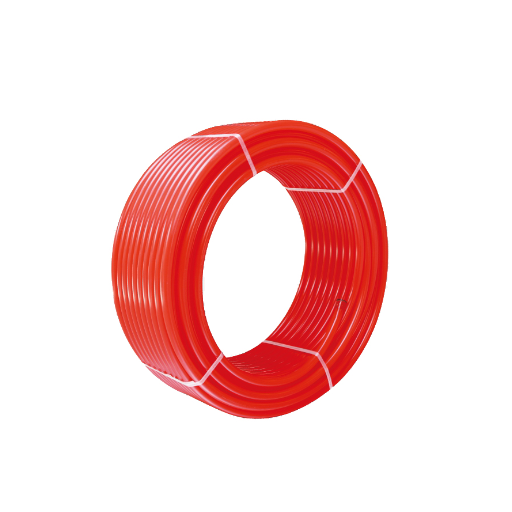
Plumbing Applications
PE-RT pipes reinforce the flexibility that plumbers may require for working with different plumbing components; however, the cores are in flexible reinforcement, electrostatic protection, and barrier layers for permeance thereof under high temperatures. The five key applications of PE-RT pipes are described below for plumbing systems:
- Hot and Cold Water Distribution: PE-RT pipes are considered a system of water supply for potable water, hot and cold. Because of their thermal performance above the top 140°F (60°C) temperatures and with intermittent exposure, they purportedly can be used with a peak temperature of 180°F (82°C). Furthermore, their corrosion resistance shall provide tested reliability for any water supply network.
- Underfloor Heating Systems: With flexibility and heat resistance, PE-RT pipes are perhaps considered the preferred choice in underfloor heating. Their thermal conduction is excellent for transferring heat and maintaining structural integrity during fluctuating temperature cycles, all of which are applied to the system would guaranteeing consistent performance over time.
- Radiator Connection Systems: A polyolefin consists of more than one polymer; thus, the plural of polyolefin is polyolefins. In contrast, a polyolefin is a polymer made using any alkene as the monomer. It would be better if you preferred poly-soap; this should be in the plural for the wider applications. Polyolefins are used in many applications, such as textiles, plastics, and packaging materials.
- Industrial and Commercial Plumbing: Besides various uses in the residential field, PE-RT piping systems are commonly applied in industrial and commercial plumbing because the pipes show good chemical resistance to various fluids. The pipes work well in conditions demanding quality materials that are cost-effective.
- Potable Water Service Lines: PE-RT pipes are a safe and durable service line solution supplying water from mains to residential or commercial buildings. Because of their resistance to environmental stresses and freeze-thaw conditions, PE-RT pipes offer less chance of rupture and have a very long life.
These applications underscore the flexibility of PE-RT pipes in solving the needs of modern plumbing infrastructure while standing for cost efficiency and for support of standards.
Industrial Applications
With their high temperature resistance, flexibility, and durability, PE-RT pipes have performed very well in numerous industrial scenarios. Here are five key applications where PE-RT pipes play a major role:
- District Heating and Cooling Systems: District heating and cooling systems use PE-RT pipes quite extensively because the pipes can bear high temperatures and pressures for an extended period. The systems require the advantage of thermal stability with operating temperatures of 180°F (82°C) and pressures usually about 6-16 bars, depending on specification.
- Process Water Transportation: Industries such as chemical manufacturing or food processing might require the laying and maintenance of pipelines that serve process water. PE-RT pipes do take care of these by resisting corrosion with abrasive or chemically-laden fluids, and maintaining the purity and flow of water.
- Geothermal Systems: One good thing about PE-RT is the versatility. Thus, they are used in vertical and horizontal ground loops where, amid soil movements, the pipes must sustain mechanical stress of long duration to ensure an efficient operation. Such systems take advantage of the thermal conductivity of PE-RT for energy transfer optimization.
- Compressed Air Systems: Use of PE-RT piping for compressed air systems inside manufacturing premises is very common. Such pipes provide for excellent pressure resistance and leakage minimization with time, assuring productivity and savings. In addition to this, ease of handling owing to lightweight composition simplifies installation and labor charges.
- Industrial Effluent Management: Industrial effluent piping systems use PE-RT drainage pipes in the transport of waste fluid. Chemical resistant and highly durable, these accept effluent transport with safety and reliability, also minimizing contamination risks to the environment and ensuring compliance with regulations.
Thus, these applications demonstrate the generic function of PE-RT pipes, which provide an efficient industrial solution to different aspects useful in making industries both functional and sustainable. Efficient and smooth operations amid harsh working conditions highlight the core working areas of the piping systems.
Heating and Cooling Systems
PE-RT pipes are considered an essential link for building and running efficient heating and cooling systems. They can operate under a very wide range of temperatures; normally between -40°F and 180°F, so they may be used in hot water or chilled water scenarios. The pipes have a high thermal conductivity, which makes the heat transfer very efficient and favors the performance of the system with little energy penalty.
The flexibility of PE-RT pipes makes them resistant to expansion or contraction due to temperature changes; therefore, they lower stresses on fittings and joints, enhancing the entire system’s longevity. Also, the materials do not permit scaling or corrosion, thus ensuring service life and minimizing maintenance costs of utmost importance in residential and commercial setups.
Based on data, their performance is verified; hence, the application of PE-RT piping systems indicates that even 20% of energy efficiency may be gained more than that of the older metal-type piping system. Consequently, with advances such as integration with smart temperature control systems, PE-RT pipes enable the promotion of sustainable heating and cooling technologies that are regarded as one of the global energy-efficiency targets.
Installation Process for PE-RT Pipes
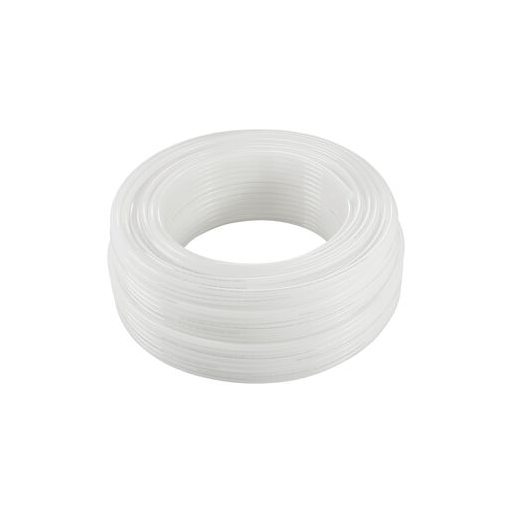
Required Tools and Materials
A smooth installation of PE-RT piping requires the following tools and materials:
- Tube Cutter: A good pipe cutter should provide clean, precise cuts that retain the pipe’s structural integrity.
- Calibration Tool: After cutting, these tools help in rounding and sizing the pipe ends to achieve a secure connection.
- Fitting Crimping Tool: Used to crimp fittings onto the pipe firmly so they do not leak or make a weak connection.
- PE-RT Pipe and Fittings: Choose PE-RT pipes with the proper dimensions and compatible fittings depending on the requirements of the project.
- PEX Expander Tool: For systems requiring expanded connections, a PEX expander prepares the pipe for insertion of the fitting.
- Pipe Insulation: Thermal insulating material is to be added in applications involving heated liquids to prevent heat loss.
- Pipe Fasteners and Clips: These are used to fix the pipes while the installation goes on to maintain alignment and structural stability.
- Measuring Tape and Marker: Exact measurements and marked guidelines are needed for the best position and cutting of pipes.
- Heat Gun: A heat gun may be needed for some adjusting or sealing operations.
- Protective Gear: Safety gloves and protective glasses are to be worn to avoid any injuries during installation.
The appropriate tools and materials must be used so that installers can guarantee compliance with industry standards and best results for system performance and long life.
Step-by-Step Installation Guide
- Preparation of Tools and Workspace: Get everything set, from tools to materials, for installation. Check the pipe and fitting dimensions and specifications for compatibility. Any dirt or obstructions in the work area must be cleared away. Wear gloves, safety goggles, and other necessary protective equipment.
- Measuring and Marking: Utilize a measuring tape and a permanent marker to note down measurements for places that will be cut or joined. Fixing the pipes inaccurately could mean nonalignment of the whole setting, causing inefficiency and probable failures. Use a square ruler to check for equal angles.
- Cutting and Deburring the Pipes: Make sure to make clean and straight cuts by the markings using the pipe cutter. Keep the edges smooth and free from burrs by using the deburring thumb/tool. This is a very important step since irregular cut edges may cause the sealing surface to store sealing substance and hurt the overall system.
- Drying Fit of the Components: Prior to any bonding or sealing, always dry fit the system. That entails putting everything together without any glue or sealing agent to check for alignment and functioning of the system. Assess alignment of adaptive parts per design specification and resolve any misalignment.
- Sealing Joinery: Seal or weld by using a suitable type of adhesive or welding material as stipulated by the component specifications. The application of heat to soften the material should be done using the heat gun while observing the recommended temperature limits, because overheating would weaken the component. After joining the parts adequately, impose steady pressure until the adhesive calls or the weld sets.
- System Testing: Conduct pressure testing for system integrity. Introduce water or air slowly into the system while observing for leaks or weak points. Refer to applicable industry standards for determining pressure during testing. Resolve all issues found before completing installation.
- Final Inspections and Cleanup: Inspect the installation in its entirety and confirm adherence to specifications and safety codes. Clean the work area and engage in environmentally sound disposal of waste materials. Maintain a detailed record of installation, measurements, materials used, and test results as part of QA.
Following these detailed steps will allow installers to put in a solid and efficient system that will ensure long-term performance and conformity with technical standards.
Common Mistakes to Avoid
- Neglecting Proper Pre-Installation Assessments: A failure to conduct thorough site evaluations can lead to gross errors in design or equipment selection. For instance, insufficient analysis of environmental considerations like temperature fluctuations, moisture levels, or structural integrity may compromise system performance and durability.
- Incorrect Material Handling: Mishandling of components or improper storage-temperature or humidity extremes, for example-could make them ineffective or shorten the working life. To prevent this, always follow the manufacturer’s recommendations for materials handling.
- Skipping Calibration or Testing: Failure to conduct procedures such as calibration or after-installation testing can often cause the system to perform below par or outright fail. This oversight could bring about costly repairs and, more importantly, safety risks. All tests must be performed by actual industrial standards.
- Failing to Document Procedure Details: Absence of generalized documentation impedes future debugging and maintenance. Record keeping, including electrical layout drawings, component specifications, and test data, shall be maintained for the traceability of equipment and materials and compliance with applicable regulations.
- The Non-Adherence to Regulatory Standards: Failure to comply with local and international codes, such as National Fire Protection Association (NFPA) standards or ISO certification, may cause legal action and compromise safety. Periodic updating is essential to make sure of full awareness of the regulations.
By addressing these prevalent mistakes with diligence and attention to detail, professionals can enhance the reliability, safety, and functionality of their installations.
Comparison of PE-RT with Other Pipe Materials
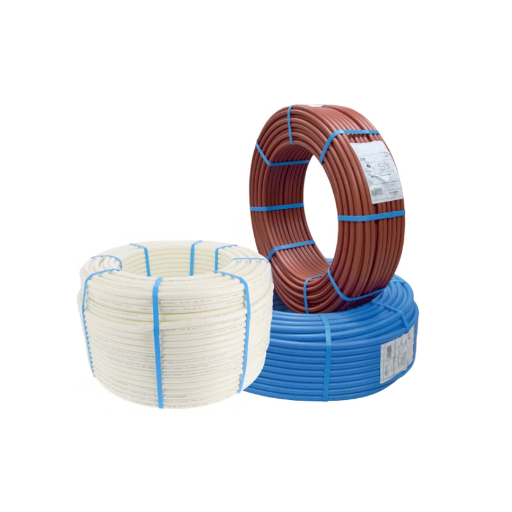
PE-RT vs. PEX: Key Differences and Similarities
PE-RT is more flexible, easier to install, and cost-effective, while PEX offers greater thermal stability, durability, and chemical resistance, making it suitable for particular applications.
|
Aspect |
PE-RT |
PEX |
|---|---|---|
|
Composition |
Heat-resistant polymer |
Cross-linked polymer |
|
Flexibility |
Superior |
Moderate |
|
Setup |
Simpler |
Tool-dependent |
|
Expense |
Lower |
Higher |
|
Strength |
Moderate |
Excellent |
|
Temp. Range |
-20°C to 85°C |
-40°C to 95°C |
|
Chemical Tolerance |
Moderate |
Superior |
|
Fixing |
Hot-melt |
External clamps |
|
Usage |
Low-temp systems |
High-temp systems |
|
Longevity |
~40-50 years |
~40-50 years |
PE-RT vs. PVC: Pros and Cons
While PE-RT is flexible, durable, and suitable for extreme conditions, PVC is cheap, rigid, and suitable for stable environments.
|
Aspect |
PE-RT |
PVC |
|---|---|---|
|
Material |
Heat-resistant PE |
Vinyl chloride |
|
Flexibility |
High |
Low |
|
Durability |
High |
Moderate |
|
Installation |
Complex |
Simple |
|
Cost |
Higher |
Lower |
|
Chemical Resist. |
Moderate |
High |
|
Temp. Range |
-20°C to 85°C |
Limited |
|
Applications |
Extreme conditions |
Stable environments |
|
Lifespan |
Long |
Long |
Performance in Various Environments
Performance behaviors of PE-RT and PVC pipes differ with environmental conditions, because their materials differ.
- Temperature Extremes: PE-RT pipes are best for lower-temperature applications, allowing them to remain flexible even at -20°C; this property reduces cracking due to thermal stress. Meanwhile, PVC remains sufficiently strong yet rigid under similar conditions, requiring careful handling to avoid cracking during installation under cold weather. Both materials do well at high temperatures; however, PE-RT has a wider range of operation temperature, such as up to 85°C, while such continuous use is usually from 60°C to 70°C on PVC, unless CPVC is being used for higher thermal resistance.
- Chemical Exposure: As PVC is particularly resistant to many chemicals, acids, alkalis, and salts, it finds use in aggressive chemical environments, for example, industrial wastewater systems. PE-RT, which has reduced chemical resistance in comparison to PVC, is fairly resistant to different chemicals that are usually used for general residential and commercial water supply systems and performs well with conventional cleaning agents and disinfectants.
- Mechanical Durability: Under dynamic loads, the flexibility of PE-RT reduces the risk of mechanical damage due to impacts, vibrations, or soil movements. PVC, being stiffer, is somewhat less forgiving under such conditions and requires external support or clamps to alleviate stress. However, being cross-linked in structure, PVC has excellent tensile strength and pressure resistance properties and will thus be preferred where strength in static situations is considered important.
- Longevity and UV Resistance: Depending on installation conditions, PE-RT and PVC are estimated to last about 40 to 50 years. The adverse effects of UV rays on the deterioration of the materials are simultaneously observed, but much faster in the case of PE-RT. In outdoor piping, protective coatings or coverings should be used to ensure long life.
In general, material selection should be carried out by evaluating thermal, chemical, and mechanical performance characteristics against ease of installation and long-term maintenance requirements, considering environmental factors and application requirements.
References
Frequently Asked Questions (FAQ)
Q: What is a PE-RT pipe?
A: A PE-RT pipe, or polyethylene of raised temperature resistance pipe, is a type of thermoplastic piping designed to handle high-temperature applications. It is valued for its flexibility and robustness, making it suitable for various infrastructure applications, including residential heating systems and plumbing.
Q: What are the applications of PE-RT tubing?
A: PE-RT tubing is utilized in a variety of applications, including residential plumbing, hydronic heating systems, and refrigeration. Its high-temperature resistance makes it ideal for transporting hot water and other fluids in both residential and industrial settings.
Q: How do PE-RT pipes maintain their integrity under different conditions?
A: PE-RT pipes maintain their integrity due to their design, which allows them to withstand high temperatures, freezing temperatures, and freeze-thaw cycles. Their resistance to slow crack growth and corrosion contributes to their long-lasting performance in various environments.
Q: What nominal sizes are available for PE-RT pipes?
A: PE-RT pipes are available in various nominal sizes, making them suitable for different plumbing applications. They are sold in coils, allowing for easy installation in both residential and industrial settings.
Q: Why are PE-RT pipes preferred for hot climates?
A: PE-RT pipes are preferred for hot climates due to their ability to handle high-temperature fluids without compromising their structural integrity. This makes them ideal for applications where water quality and reliability are crucial, such as in residential heating systems and infrastructure applications.
Q: What is the resistance to corrosion in PE-RT pipes?
A: PE-RT pipes are valued for their resistance to corrosion, which is essential for maintaining water quality in potable water systems. This characteristic ensures that the pipes remain functional and safe for long periods, even in challenging environments.
Q: How do PE-RT pipes compare to copper tubes?
A: PE-RT pipes offer several advantages over copper tubes, including greater flexibility, resistance to corrosion, and lower thermal conductivity. They are also more cost-effective and easier to install, making them a popular choice for both residential and industrial piping systems.
Q: What are the benefits of using composite pressure pipe in conjunction with PE-RT?
A: Composite pressure pipes, when used with PE-RT, enhance the overall performance of piping systems. They combine the flexibility of PE-RT with the strength of other materials, providing robust solutions for high-pressure applications and ensuring reliability in various infrastructure projects.



